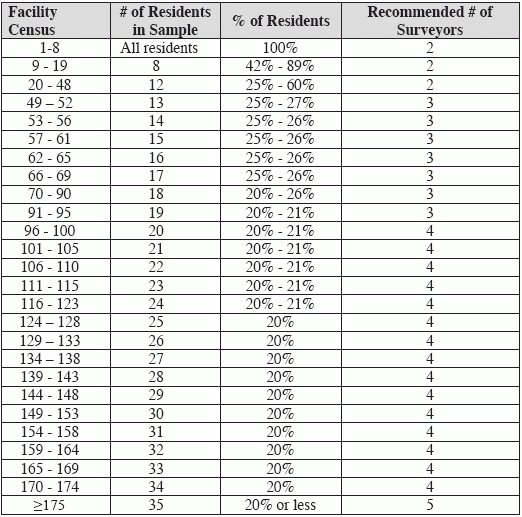The New Long-Term Care Survey, Continued
What else will the new survey require? Make sure your facility is prepared for close scrutiny of these areas, too. Surveyors want to watch residents eat. Surveyors will observe the first scheduled full meal, including all dining locations and room trays. If your facility has more dining areas than the surveyor team can cover, they'll prioritize the area with the most residents dependent on staff. Surveyors will keep an eye out for any initial pool residents (see page 1 for more information on which residents may be chosen) who may be experiencing nutrition or hydration concerns, including weight loss, but will also be paying attention to identify any residents who they observe to have issues eating or drinking. What's cooking? Beyond a full kitchen observation, surveyors will be looking out for failures in protocol that could result in foodborne illness. They'll also try to confirm that meals are being served hot, and that the staff in the dietary department are competent, as evidenced by the food included in each meal. Note: "Food included in meals is the responsibility of the dietician, or the person planning the meals. Competency in dietary staff would be identified by them following the menus, with the correct food and amount," says Marilyn Mines, Rn, BC, RaC-Ct, senior manager at Marcum LLP, in Deerfield, Illinois. (See MDS Alert Volume 15 Number 12 for more information on what meal information you'll need to provide surveyors.) Surveyors want to identify residents who smoke. They'll be looking to identify at least one resident who smokes, so they can observe him or her to make sure that the facility enforces safe smoking protocols. Surveyors want to evaluate your facility's protocols on identifying and controlling infections. They'll be looking for breaches in infection control throughout their time on the floor, and at least one surveyor will be reviewing the facility's infection prevention and control program and antibiotic stewardship programs, as well as the facility's protocols for influenza and pneumococcal vaccinations. If communicable infections are present, they'll also be on the lookout to confirm that staff are taking transmission-based precautions, says Maureen Kelly, senior consultant at LW Consulting inc., in Harrisburg, Pennsylvania, duringa webinar. They want to observe your staff's administration of medications, too. Surveyors want to check on how your facility's medications are being distributed. CMS instructs surveyors to observe medications for a sampled resident whose medications regimen is already being reviewed, unless the opportunity doesn't arise, in which case surveyors will observe the nurse administering medications for any resident. They'll be looking to observe all different medication routes and units, on multiple shifts, culminating in at least 25 "medication opportunities." Don't forget: Surveyors will be checking to make that all medication the facility administers is within its expiration date. How many residents will be in the sample? "After completing all initial pool activities, the survey team meets to choose residents from the initial pool to include in the sample based on concerns identified from the interview, observation, and/or limited record review, and consideration of resident-specific data," CMS says. Check the following table for an idea of how many residents surveyors will be including in their stratified sample, but note the maximum of 35. Remember: Surveyors are looking for discrepancies between information documented on each resident's MDS and that which they personally observe. Beyond the sample selection, surveyors will select three additional residents' records for a closed record review, Kelly says. They'll be looking at someone who died unexpectedly, somebody who went to the hospital, and a community discharge, with a lookback period of 90 days. If someone hasn't passed away, they won't be able to do that closed record review; same with hospitalization or discharge, she says. Exit Conference Surveyors will conduct an exit conference meeting with facility administration and/or leadership, the ombudsman, and, if available, an officer of an organized resident's group, as well as one or two residents. During the exit conference, surveyors will alert the facility's management - and any other attendees- to their observations and preliminary findings. Surveyors have the option to conduct two exit conferences, including a second aimed toward residents, and should invite the ombudsman to attend one or both. In order to respect residents' privacy, surveyors won't mention resident names. Surveyors are instructed to "provider information in a manner that is understandable to those present," CMS says, which means surveyors will use actual descriptions of any deficiencies, instead of just throwing out an Ftag. Look out for the official report of the survey, which will include form CMS-2567 if surveyors have cited any deficiencies.

